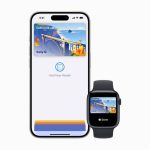Alex Wong/Getty Images
- President Trump has COVID-19. He may have exposed Joe Biden to the virus during Tuesday’s debate.
- Biden and his wife, Jill, tested negative for the virus on Friday, after which Biden resumed in-person campaigning.
- But health experts say Biden could have an early case of the virus that a test can’t yet pick up.
- Official guidance suggests he should quarantine for 14 days just in case.
- Visit Business Insider’s homepage for more stories.
Three days after a loud, chaotic presidential debate with former Vice President Joe Biden, President Donald Trump announced he’d tested positive for the coronavirus.
Biden and his wife Jill subsequently tested negative, after which Biden announced that he’d be resuming cross-country campaigning. Friday afternoon, the Democratic nominee traveled to Grand Rapids, Michigan, where he delivered a speech to prospective voters while wearing a mask.
Party leaders are encouraging Biden to keep his campaign going, despite his possible exposure to the virus.
“This is not a hiatus of the campaign,” Sen. Tim Kaine told The New York Times, adding, “we’re in the closing stretch of the campaign and they’ve got to be aggressively campaigning.”
But health experts say it’s a risky move. Just because Biden tested negative today doesn’t mean he can rest assured that he isn’t infected. The virus’ average incubation period is four to five days, and cases don’t necessarily register on tests until after that time. So it’s possible Biden did catch it and it’s just too soon to know.
On the off-chance that’s true, Biden’s decision to continue attending in-person campaign events could put his aides, family members, and supporters at risk.
“Reminder that testing COVID-19 negative today does not mean that those exposed to POTUS/FLOTUS/Hope Hicks are in the clear,” Anne Rimoin, an epidemiologist at University of California, Los Angeles, tweeted on Friday.
Biden could have COVID-19 even though he tested negative
Jim Urquhart/Reuters
On average, a person infected with the virus doesn’t show symptoms until four or five days after they were exposed; and often, they won’t test positive for it during that time period, either. That’s because a person’s viral load – the amount of viral particles they’re shedding and carrying – is usually too low for standard coronavirus tests to detect during the first few days.
So data suggests that if Trump did transmit the virus to Biden, the former vice president would most likely not start to show symptoms or test positive until this weekend.
The Centers for Disease Control and Prevention recommends that anyone who gets exposed to the coronavirus quarantine for 14 days, since that’s the maximum amount of time it can take the virus to incubate.
The Minneapolis Department of Health suggests people wait to get tested until five to seven days after an event where they might have been exposed. If that first test comes back negative, the department says, people should get tested again at the 12-day mark.
That likely applies to Biden.
“You can’t test yourself out of self-quarantine,” Monica Gandhi, an infectious-disease expert at the University of California, San Francisco, told Business Insider.
That means Biden “shouldn’t be campaigning,” she added.
Trump and Biden stood 10 feet apart, but the the debate was still high-risk
Tuesday’s debate took place inside an auditorium at Case Western University. Trump and Biden did not wear masks, though their podiums were spaced between 10 and 12 feet apart.
Over the 90-minute debate, both candidates spoke loudly and forcefully, which could have caused Trump to expel coronavirus-laden aerosols. These tiny particles can hang suspended in the air and travel as far as 16 feet indoors, according to research from the University of Florida.
“The concerning part is that Trump yelled straight for 90 minutes,” Gandhi said. “And the louder volume, the constant talking can be kind of like singing. It’s loud — it’s a forceful exhalation.”
The windowless indoor space likely didn’t help either.
“The biggest risk is these closed, indoor environments,” Don Milton, a virologist at the University of Maryland, previously told Business Insider.
Indeed, most cases of documented coronavirus transmission have occurred in crowded, poorly ventilated indoor spaces. Case Western University did not respond to Business Insider’s request for comment on its auditorium’s ventilation system in time for publication.
Additionally, some guests of Trump’s – who could have been exposed to him prior to the debate – did not keep their masks on.
“A Cleveland Clinic physician did offer audience members masks, but some did not adhere to the requirement,” Andrea Pacetti, a spokesperson for the Cleveland Clinic, which oversaw health precautions for the event, told Business Insider.
Determining how infectious Trump might have been on the debate stage requires knowing when, precisely, he started showing symptoms. The White House has not released that information, but Bloomberg reported that a few Trump aides thought he might have showed early symptoms on Wednesday.
If that’s true, he could have been at his most infectious on debate night.
“Models show the highest infectious period, the period at which you’re spewing the most virus, is your onset of symptoms and possibly the day before,” Gandhi said, adding, “it really is at that point where you’re shedding more virus from nose and mouth that can be given to other people.”
Morgan McFall-Johnsen contributed reporting.
Powered by WPeMatico






